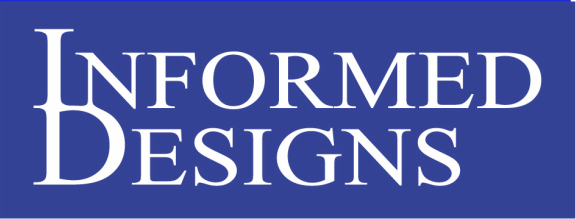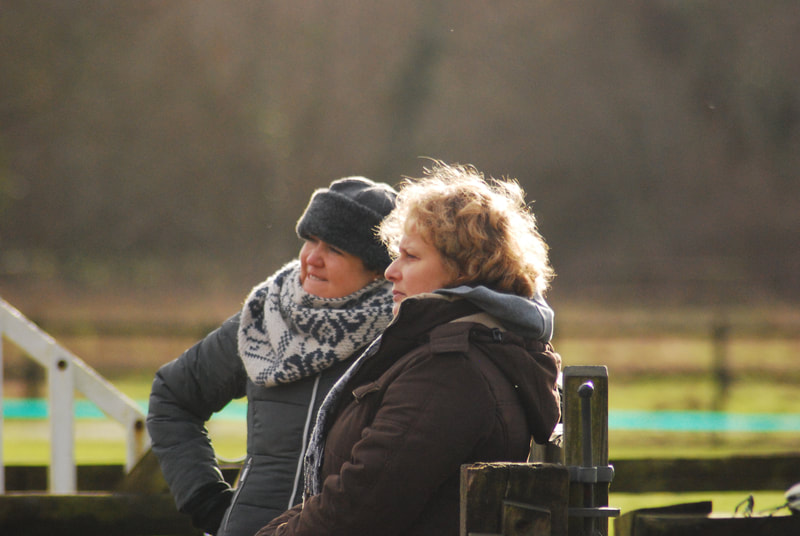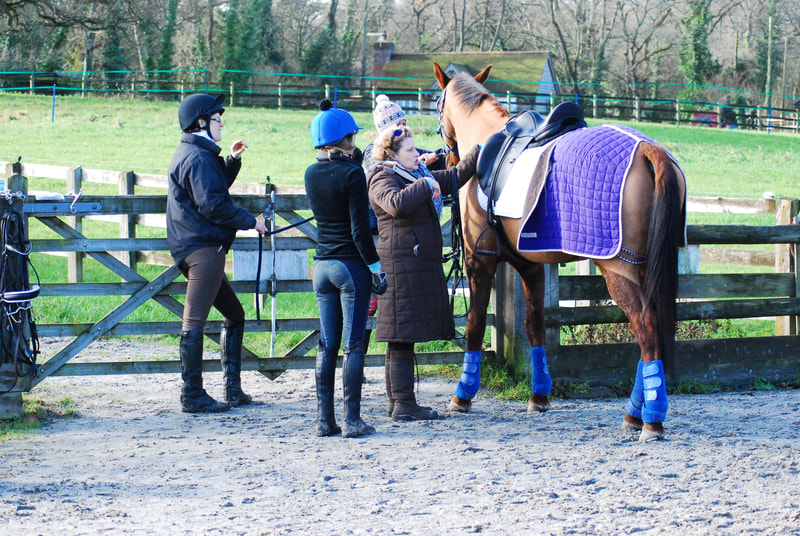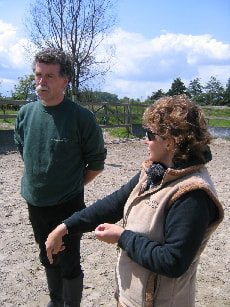|
DOUBLE BRIDLE BITS
Part Three: Ports Cheeks Shanks Let’s just clarify a few terms and uses when discussing Weymouths Cheeks Purchases and Shanks: The over-all length of the cheek of a Weymouth is called the Cheek and to be clear when discussing how to bring different and more refined pressures into action the part of the cheek from the mouthpiece to the top of the cheek where you attach your bridle is called the Top Purchase and the part of the Cheek below the mouthpiece is called the Shank. The Top Purchase creates upper head pressure and lets you carry the chain in the right place for the Horse you are Bitting. The Shank creates lower mouth and jaw pressure It is very important that these two lengths work well together this is what creates a good balance to the Weymouth If you build the overall Cheek ridiculously short or one part clearly out of proportion to the other you are unbalancing the pressures and not allowing for a good release and reward for the Horse. Chains/Curb straps: Should be as substantial as possible and Double Link [if chain], and ideally used with a lip strap to encourage the chain to stay in place and not twist on the horses jaw. The chain or curb strap should be fitted so it comes into play when the cheek is at about a 45% angle. If your chain is too loose then there is too much downward pressure inside the horse’s mouth and too much poll pressure on the top of the head. If the chain is too tight then the Horse gets no reward or relief from the relentless pressure. You want to set your chain so that you get a balance of inner mouth, poll and jaw pressure The chain should be set so that as its pressure comes to bear on the under-side of the jaw it stops the first two pressures of inner mouth and Poll overriding each other. PORTS: Perceptions: People get very worried about the size of a Port thinking that they are severe. Remember the bottom of the port does not sit up on the top of the tongue making the Port stick into the roof of the mouth. As the cheek of the Weymouth turns the Port rolls over in the mouth placing the port in front of the tongue creating a space for the middle of the tongue to move forward into. The space you are working with is not from the top of the tongue to the roof but the bottom bar of the mouth on the lower jaw to the roof and most Horses have at least an 1 ¼” to an 1 ½” of space here. The other thing to remember is that what-ever bit you have in the horse’s mouth is sandwiched between the top of the tongue and the roof of the mouth so all horses are accustomed to feeling some bit pressure on the roof of the mouth we just have to make sure that pressure is comfortable fair and smooth. Shapes: Each different shape of port gives the Horse a different release or “feel” The larger and wider the port the less tongue pressure the Horse feels and the more bar pressure. The shallower the port the more tongue pressure and the less bar pressure. You have to work out what each individual Horse is asking for and what gives him the most comfort and confidence and for you as the rider the best signalling ability and degree of control. Remembering that the feel we want to achieve is clear signals and reward not unrelenting constant pressure with no escape for the Horse. Build: It is important that the Port is built well and not built by someone who has not thought about the anatomy of the horse’s mouth the Horse is very sensitive about where the bit sits and were pressures are placed, If a Port is so wide that the action falls outside the jaw line then this just causes an uneven feel for the Horse inside its mouth so it cannot possibly move evenly forward in to the contact and will probably cause the Horse to block badly on the side that the bottom of the port grabs the outside of the jaw and will most certainly cause bruising on the bar of the mouth. Port Shapes: Mors Lotte: gives overall even tongue pressure all across the tongue. Shallow Ports just allow a little tongue room which should be in the centre. Most of the action is initially on the tongue, pressing it down into the bottom jaw and then when the tongue is completely depressed the action then finally touches the bars. Medium Ports allow more tongue room in the centre of the mouth, the centre of the tongue is allowed room to fill the space created by the port but as the medium port is normally only 1/2” to ¾” high and the tongue is 1” to 1 1/2” thick this still only gives a little more room Medium Wide Ports also allow tongue room for the horse but as they have a wider base more of the width of the tongue is allowed into the space just make sure the base of the Port does not fall outside the jawline. Higher Ports can allow the tongue plenty of room providing they are the right width and height not as you sometimes see very high and narrow which would force the tongue un naturally up into a very pinched narrow space and push the top of the port too strongly into the roof of the mouth. If the base is inside the jaw width and fits neatly into the space between the bottom bar and the roof of the mouth then this will give a horse that is very worried about its tongue lots of relief from tongue pressure Part Four: How to fit and when to fit © Hilary Vernon 2015
0 Comments
Leave a Reply. |
Hilary VernonAuthor Archives
April 2023
|





 RSS Feed
RSS Feed